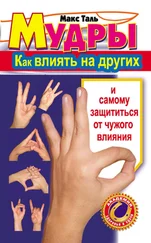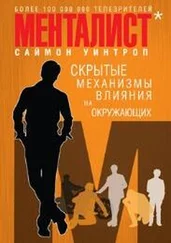40. Dagnoli, J. (1991), “JAMA Lights New Fire under Camel's Ads”, Advertising Age (16 December).
41. Schlosser (2001), p. 43.
42. McNeal, J.U. (1992), Kids as Customers: A Handbook of Marketing to Children (New York; Lexington Books).
43. Liebert, R. M, and Sprafkin, J. (1992), The Early Window , 3rd ed. (New York; Pergamon Press).
44. Gerber, J., Burgos, K., Rodriguez, A., Massey, M., and Levine, R. (2001), “Self-Other Differences in the Effect of Technical Information on Ad Credibility”, доклад был представлен на ежегодной конференции Западной психологической ассоциации (Western Psychological Association) , Мауи, Гавайи, 3–6 мая.
В ходе других многочисленных исследований были получены сходные результаты. См. Wilson, Т. D., and Brekke, N. С. (1994), “Mental Contamination and Mental Correction”, Psychological Bulletin 116. p. 117–142.
45. Marriott, Michell (2001), “Playing with Consumers”, New York Times, 30 august, p. Dl, D6.
46. Farhi, p. (1998), “AOL Gets Its Message out on ‘Mail"' Washington Post, 17 December, адрес web-сайта: http: / www. washing-tonpost.com/wpp-sv/style/movies/features/ аоlinmаi1/htm.
47. Lipman, J. (1989), “Outcry over Product Placement Worries Movie, Ad Executives”, Wall Street Journal , 7 April, p. В6.
48. Bovee, C, Thill, J., Dovel, G., and Wood, M. (1995), Advertising Excellence (New York; McGraw-Hill).
49. Bader, Jenny L. (2001), “Brand-Name Lit: Call Me Tiffany”, New York Times, 9 September, p. 2 WK.
50. Kilbourne(1999), p. 65.
51. Savan, Leslie (1994), The Sponsored Life: Ads, TV, and American Culture (Philadelphia: Temple University Press), p. 6–7.
52. Morning Edition (2002), National Public Radio, 5 April.
53. Schlosser(2001).
54. Frank, Thomas (1999), “Brand You: Better Selling through Anthropology”, Harper's Magazine (July), p. 74–79.
55. Frontline (2001), “The Merchants of Cool: An Interview with Dee Dee Gordon and Sharon Lee”, 27 February. Запись представлена на web-сайте PBS : http : //www. pbs. org/wgbh / pages/frontlinesshows/cool/interveews / gordonandlee.html.
56. Kilbourne(1999)
57. Из Underhill, Paco (1999), Why We Buy: The Science of Shopping (New York; Simon Schuster). См. также Gladwell, M. (1996), “The Science of Shopping”, New Yorker , 4 November, p. 6–75.
58. Underhill(1999), p. 47.
59. Там же, p. 77–78.
60. Там же, p. 102,119.
61. Там же, p. 33,44.
Глава ВТОРАЯ
1. Всестороннее исследование символов авторитета как источника влияния можно найти в книге Cialdini, Robert (2000), Influence: Science and Practice , 4th ed. (Boston: Allyn Bacon).
2. Все было хорошо, пока у него в 1999 году не возникли проблемы с Интернет-этикой.
3. Erickson, В., Lind, Е. A. Johnson, В. С, and O’Barr, W. М. (1978), “Speech Style and Impression Formation in Court Setting: The Effects of Powerful and Powerless Speech” Journal of Experimental Social Psychology 14, p. 266–279.
4. MacLachlan, J., and Siegel, M.H. (1980), “Reducing the Costs of TV Commercials by Use of Time Compressions” Journal of Marketing Research 17, p. 52–57 .
5. Brown, D., Scheflin, A.W., and Hammond, D. С (1998), Memory, Trauma Treatment, and the Law (New York; W.W. Norton).
6. Gerber, J., Burgos, K, Rodriguez, A., Massey, M., and Levine, R. (2001), “Self-Other Differences in the Effect of Technical Information on Ad Credibility”, доклад был представлен на ежегодной конференции Западной психологической ассоциации (Western Psychological Association) , Мауи, Гавайи, 3–6 мая.
7. Слова д-ра Чарльза Эдвардса приведены в Safir, L., and Safire, W. (1982), Good Advice (New York; Times Books), p. 6.
8. Cooper, J., Bennett, E., and Sukel, H. (1996), “Complex Scientific Testimony: How Do Jurors Make Decisions?” Law and Human Behavior 20, p. 379–394.
9. Две из 12 будущих медицинских сестер признались, что в описанной ситуации они дали бы больному лекарство.
10. Honing, С.К., Brotzman, Е., Dalrymple, S., Graves, N., and Pierce, С. M. (1966), “An Experimental Study in Nurse-Physician Relationships”, Journal of Nervous and Mental Disease 143, p. 171–180.
11. Davis, N., and Cohen, M. (1981), Medication Errors: Causes and Prevention (Philadelphia: George F. Stickley). См также Cialdini (2000).
12. Randi, J. (2001), “The art of ‘Cold Reading'", учебное заведение Джеймса Ранди , адрес web-сайта: http : //randi. org/ library/coldreading/index.html.
13. Randi, James (1982), Flim-Flam: Physics, ESP, Unicorns and Other Delusions (Amherst, N.Y.; Prometheus Books), p. 270–271.
14. Там же, p. 263.
15. Цитируется no Fellows, Bob (2000), Easily Fooled (Minneapolis; Mind Matters).
16. Randi (1982), р. 62.
17. Wilson, Gregory (2002), “How to Influence Anyone with Five Magic Words”, лекция в Калифорнийском университете, г. Фресно, 24 апреля.
18. Fellows (2000), р. 20–22.
19. Цитируется по Lederer, R, (2000), “Political Bloopers”, Funny Times , (November), p. 8.
20. Hartshorne, R, and May, M.A. (1928), Studies in the Nature of Character , vol. 1: Studies in Deceit (New York; Macmillan).
21. Baumeister, R., Bratslavsky, E., Finkenauer, C, and Vohs, K., “Bad Is Stronger Than Good" Journal of General Psychology , in press.
22. Martin, D. (2000), “What’s in a Name: The Allure of Labels”, New York Times , January 9, p. 2 WCK.
23. Fox, Stephen (1997), The Mirror Makers: A History of American Advertisement and Its Creators (Urbana; University of Illinois Press), p. 71.
24. Printers'Ink poll (1945) Printers’ Ink, September 28.
25. Martin (2000).
26. В рекламе 1927 года.
27. Fox (1997), p. 89
28. Lavington, Camille (1997), You’ve Only Got Three Seconds: How to Make the Right Impression in Your Business and Social Life (New York; Doubleday).
29. Tripp, C, Jensen, T, D., and Carlson, L. (1994), “The Effects of Multiple Products Endorsements by Celebrities on Consumers’ Attitudes and Intentions”, Journal of Consumer Research 20, p. 535–547.
30. Petersen, Melody (2002), “Heartfeld Advice, Hefty Fees: Companies Pay Stars to Mention Prescription Drugs”, New York Times , August 11, sec. З, p. 1,14.
31. Ross, R.P., Campbell, T, Wright, J. C, Huston, A. C, Rice, M.L., and Turk, p. (1984), “When Celebrities Talk, Children Listen: An Experimental Analysis of Children’s Responses to TV Ads with Celebrity Endorsement”, Journal of Applied Developmental Psychology 5, p. 185–202.
32. Цитируется no Savan, Leslie (1994), The SponsoredLife: Ads, TV, and American Culture (Philadelphia; Temple University Press), p. 8–9.
33. United Colors of Benetton, “Customer Service and Sales Training”, in Runshkoff, D. (1999), Coercion: Why We Listen to What “They” Say (New York; Riverhead Books), p. 13.
Читать дальше







![Евгений Спирица - Боевое НЛП - техники и модели скрытых манипуляций и защиты от них [litres]](/books/396502/evgenij-spirica-boevoe-nlp-tehniki-i-modeli-skryt-thumb.webp)




